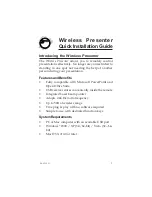
44
EN
4
Exposure
The camera sets the optimum shutter speed automatically for the aperture value you have
selected. When you open the aperture (decrease the aperture value), the camera will focus
within a shorter range (shallow depth of field) and produce a picture with a blurred
background. When you close the aperture (increase the aperture value), the camera will
focus within a longer range. Use this mode when you wish to add changes to the background
representation. Before shooting, you can use the preview function to check how the
background will look in your picture.
g
“Preview function” (P. 47)
Set the mode dial to
A
and turn the control dial to set the aperture value.
To check the depth of field with the selected aperture value:
j
See “Preview function” (
g
P. 47).
To change the exposure adjustment interval:
j
This can be set in 1/3 EV, 1/2 EV or 1 EV increments.
g
“EV STEP” (P. 94)
Shutter speed is blinking:
j
The optimum exposure cannot be obtained. For details, see “Exposure warning display” (
g
P. 125).
The camera sets the optimum aperture value automatically for the shutter speed you have
selected. Set the shutter speed depending on the type of effect you want. A higher shutter
speed allows you to capture a fast-moving subject without blur, and a slower shutter speed
blurs a moving subject, creating a feeling of speed or motion.
Aperture priority shooting
TIPS
Shutter priority shooting
When the aperture
value (f-number) is
decreased
When the aperture
value (f-number) is
increased
Viewfinder
Aperture value
Shutter speed
AF confirmation
mark
Shooting mode
Open the aperture (f-number is decreased)
Close the aperture (f-number is increased)
A fast shutter
speed can freeze
a fast action
scene without any
blur.
A slow shutter
speed will blur a
fast action scene.
This blurring will
give the
impression of
dynamic motion.
s0018_e_00_0_unified.book Page 44 Tuesday, March 18, 2008 4:08 PM
















































